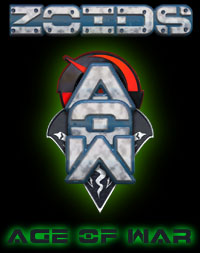
Unit Data
Classification: Daidalos
Type: Cameroceras
Primary Mission: Deochalcum/Emeralite recovery and processing facility
Secondary Mission: Marine defense/assault platform
Tertiary Mission: Classified (Mactabilis Telum; "Lethal Spear")
Power Plant: GDI-99FCZ (Guylos Deochalcum-Infused Fleet Class Zoid)vian)
Chassis: 0001
Crew: 696 (9 officers, 60 military personnel, 127 Zoid personnel, 500 refinery workers)
Statistics (Cruise/MT Deployed)
Length: 1,090 meters
Width: 175/430 meters
Height: 180/255 meters
Displacement: 1,620,000 tons (Zoid)
Performance
Submerged: 40 Knots
Classified (Air: 200 KPH)
CAPABILITIES - GENERAL
The GFZ-1000 Daidalos is the largest Zoid known to exist, natural or manufactured, dwarfing the mighty Gallant Mariner. Almost 80% of its mass is comprised of the gigantic conical shell which holds the onboard factory, cargo, and Zoid forces. Each segment of the GFZ-1000 Daidalos must be reviewed separately, though there are some overall factors that can be covered. On the whole, the GFZ-1000 Daidalos can withstand any known depth, and function unimpeded there. It was constructed as a mobile, search/extract/process facility for both Deochalcum and Emeralite, the two elements which allow the Dynasty to exist among such powerful factions, even in its weakened state. The Zoid is designed to carry and process somewhere in the capicity of 1,000,000 tons of material, and also houses more than 100 smaller Zoid units to both carry out its duties and defend the Daidalos, should it fall under attack by forces political or natural. Located about the armor on most sections are large magnesser lift engines. These allow the massive Zoid to actually maneuver when out of the water when combined with the central anti-graviton field generator. Both propulsion systems are considered a part of the extremely classified Mactabilis Telum system, and are used to aim the massive cannon.
HISTORY
It is well known that Guylos has returned to using Deochalcum since the last age, that its refinement has been improved, and the shielding of its radiation through the use of the new crystalline mineral dubbed Emeralite. It is also known that these two components have been fused together and alloyed with the old Dark Armor to create Reactionary Dark Armor, which hardens under pressure and becomes stronger with intense heat or radiation. However, the deposits available to the Dynasty once again began to dwindle, and the only new sources to be found were located in intensely deep water. It was already taking almost a full day for mining Zoids to surface with what ore they could extract due to extreme decompression, and Zenevas and other forces were growing steadily in strength.
The order was given to find a solution to the issues of Guylos Zoid production. The Dynasty needed more Deochalcum for power plants, more Emeralite for armor and reinforced structures, greater speed in the retrieval of these elements, and more efficiency in their processing. The solution came in the form of a staggering discovery by the deepest diving Angstmorder to date; something was alive down there… something immense. Major Kahsar, a military scientist in charge of the Deep Dive Research Division, knew such a Zoid could be the answer that Guylos needed. His team managed to bait and capture one of the massive Zoids, then drew it to the surface. The DDRD began work designing a new capital Zoid from the wild creature’s specifications. Within a year a secret grotto was chosen as the construction site for the very first GFZ designated unit; a Guylos Fleet Zoid. The Guylos name of the project is “Daidalos”, a name which literally means “cunningly or curiously wrought.” The massive, million-ton cameroceras is well deserving of the name. The code name for the Zoid within Helic and Zenevas, however, is “Typhon”, the god of all monsters.
DEFENSES
First and foremost, as with any cameroceras, the GFZ-1000 has one immense shell. The cone is comprised almost entirely of Emeralite Infused Dark Armor which is, of itself, virtually indestructible to conventional kinetic and heat-based weaponry. The skin of the first segment and tentacles is also made of Dark Alloy; not as strong as Dark Armor but designed to withstand a virtually unlimited crush depth. The skin of the entire Zoid is also coated with SDM (Sensor Defeating Material) to help reduce detection at long ranges. One cannot hide a kilometer-long squid for very long using conventional means.
Thaumas is peppered with emitters that wreck havoc with tracking systems, jam displays, and slam non-friendly units with ECM pulses. There are no less than a dozen anti-torpedo and ant-missile launchers around the Zoid as well, reducing the chances for incoming projectiles from striking, let alone harming, the skin of the GFZ-1000. Also placed about the shell of the Thaumas are more than a dozen turrets each armed with a pair of General Defense Systems 90mm “Doomsong” defensive high speed pulse beam cannons. These can knock missiles out of the sky at 3 kilometers out of the water and are still effective within 500 meters while submerged, and, in a pinch, can be leveled against larger targets en masse..
If required the Thaumas can, indeed, “ink” the waters about it. However, in this case it pumps Deachalcum infused waste water into the sea around it with great force, often in conjunction with maneuvering. This cloud quickly extends to more than a kilometer and ravages sensory and communication systems, chokes intakes, and eats at any “soft” parts it comes into contact with (soft meaning hoses, wires, gaskets, and canopies… and pilots). This system alone could crush a small fleet by compromising vital fittings at extreme depth.
ARMAMENT
The GFZ-1000 Thaumas has relatively light and simple defenses for such a huge machine. Hidden beneath the hood and again aft in the fourth segment are missile and torpedo batteries that allow attack from depths down to 16 kilometers. There are a handful of linear particle cannons which feed directly into the Zoid’s core, allowing it to use its Deochalcum reactors to boost its local defense grid. Beyond this, the Thaumas relies on a small host of conventional sea, air, and land Zoids to protect it.
HLS-240 Weapon Launch System (8) – Integrated construction; lateral hood, fixed emplacements
These magazine fed torpedo tubes are located under the “spikes” of the Thaumas’ hood. Each holds up to 60 240mm heavy torpedoes or missiles. For submarine targets the HLS-240 is armed with the Blindshark Mk-9 extended range homing torpedo. This weapon has a range of 20 nautical miles and can reach speeds of 190 knots, detonating with enough force to disable or destroy a Whale King with a single strike. The gunner may also select from a range of heavy missiles as well, most notably the Heartcleaver anti-Zoid tactical missile. The Heartcleaver seeks Zoid cores out to a range of 200 kilometers away and self-guides for an armor piercing detonation.
"Shieldhammer" 200mm Artillery Cannon (24) – Integrated construction; dorsal hood, in 6 360° lateral arc hiding emplacements of 4 guns each
Considered the primary weapon of the GFZ-1000 should enemies come within 100 kilometers, the Shieldhammer is an electromagnetically accelerated standard projectile cannon system that rips targets apart out to 140 kilometers. Projectiles are semi-guided with an extra armor jacket to resist close in defense weapons. On impact this jacket explodes outward as additional shrapnel. The Thaumas has six turrets, each armed with a quartet of these cannons, which may be fired independently or cyclically until they use up their 300 rounds of ammunition. When not in use the turrets recede into the hood armor.
"Seaburst" 150mm Particle Stream Cannon (22) – Integrated construction; lateral, dorsal, and anterior arcs, in 11 turretted emplacements of 2 guns each
Primarily integrated into the GFZ-1000 as a defensive armament, the Seaburst is an exceptionally well engineered weapon. The gun looses a stream of accelerated particles that can penetrate seawater as well as atmosphere, making ideal to shoot down torpedoes and missiles alike. If enemies close to within half a nautical mile of the Thaumas while submerged or 6 kilometers above water the guns can be brought to bear on Zoids as well.
“Urchin Spine” HVV Launcher (12) – Integrated construction; lateral, dorsal, and anterior emplacements w/ 20° universal arcs
Placed about the massive shell of the Thaumas are a dozen “Urchin Spine” hyper-velocity vehicle launch systems. These have a limited ability to swivel within their sockets to alter launch vectors which allows them to fire extreme velocity, guided anti-missiles to destroy incoming projectiles and damage units within 3 nautical miles. Each launcher is fed by a magazine of 200 hyper-velocity missiles, each with an armor piercing capped high explosive warhead. The unit can launch rounds at a rate of one missile per 5 seconds.
"Grave Dredger" 150mm Particle Beam Cannons (16) – Integrated construction, 2 guns per tentacle
These are particle cannons modified for use as mining instruments, however, they are still quite deadly if turned on virtually any Zoid. Two are mounted laterally within the last armored segment of each tentacle. The emitters are directed in pairs to act as a form of particle knife to slowly cut through dense rock. The blades have a reach of almost 600 meters but as direct fire weapons can cause severe damage to most Zoids up to 2 kilometers away.
SUMMARY
The creation of the largest single Zoid in history also ranks with the greatest risks taken by any nation in the history of Zi. The immense cameroceras was to be the sole key to Guylos retaining their control of Deochalcum, the power that enables the Dynasty to exist amid the more powerful nations about them. The risk seems to have paid off. Guylos is now enabled to seek out submerged Deochalcum deposits no matter where they can be found, extract them, and refine their fuel source on site. Daidalos is also exceptionally capable in defending itself and the deposits which it is charged to exploit. Its ability to carry a large force of submersible work Zoids as well as a defense fleet is invaluable, and as it can be used to transport and deliver land-based battleherds extends the range of its usefulness as a military platform. In all, the GFZ-1000 is as perfect a result as the Empress could have hoped for, ensuring the Dynasty as a serious contender for power into the next generation.
The Build
First, I wanted to build something very different than anything I’ve built before. I also wanted to build something that I haven’t seen in a custom before. The choice of building a cameroceras was inspired also by a box of junk I had been collecting just in case I could find a use for it… bottles, plastic packages, and a huge supply of “interesting” bottle caps. Stacking these in different ways became the core of the concept; the caps looked like a huge turbine of some kind. Stacked up in a cone-like shape gave me the notion for the shell shape, and from there it was a matter of researching the giant mollusk and filling out the details.
This is the most unique build I have yet attempted; the relatively simple body type (the cone) with a squid stuck on the end of it. But I wanted it interesting… again, to be different. I went with the idea of a gigantic Zoid; a deep ocean industrial mining facility. To keep a sense of scale, I would have to use materials that had good amounts of texture and surface detail, then, after it was all together, I could add lots of tiny details to fill out the build, like the original Galactica model.
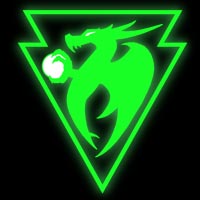
AI-2 Profile
Daidalos has a mind of its own, as with any modern Zoid. A creature of the deepest, darkest places of the world, the mind of the cameroceras from which it is derived provides the perfect foundation for this, the greatest Zoid ever built. Astoundingly patient, absurdly efficient powers of observation, and silently hostile, the Daidalos is well balanced to handle the endless, lonely task ahead of it. And yet it is more than capable of slaughtering a host of enemies set against it, without needlessly reacting to every little nuisance that flitters about the dark waters. The massive Zoid barely notices some enemies and casually smites others that it deems a possible threat. There is a level of arrogance that could compromise the Zoid’s security, but there is also little out there that can realistically capitalize on that arrogance.
CAPABILITIES - Operations Section
Most simply recognized as the "head" of the Daidalos, the concept is misleading as the command structures do not reside here. The AI2, or mind of the Zoid, however, does. The most notable features here are the enormous eyes, the hood, and the collar. The huge eye domes are loaded with sensory and communications equipment for locating ore deposits, navigating the deepest sea floor, tracking any and all Zoids and natural life within 1,000 kilometers, and maintaining contact with the Daidalos’ school of worker and defense units. Above these components is the cameroceras’ hood; a daunting armored structure that holds within it the forward torpedo and missile batteries. The forward mining operations control tower is located atop the hood on the port side. Finally there is the "collar" or the fore-collar as it is referred to by the crew (the aft collar being attributed to the next section aft). This is the primary forward reinforced anti-crush ring. It is perforated with ten forward facing navigational arrays that may also illuminate the work waters before the Daidalos and allow better navigation of service units around the writhing tentacles.
Parts List
Seismosaurus
Hood, engine armor
Gustav (Moonbay version, trailer crane base)
Drill unit base
Black Rhimos
Drill
Aquadon
Eye base units, main engine intake
Molga & Kreep (motor gears)
Eye sensor arrays
Blox
Eye lense armor
Huey Cobra Helicopter
Primary Engine
USS Arizona
Landing platform, refinery waste tanks
Electronic Glowstick/Road Flare
Power Core/lighting system
Warhammer 40k Immolator
Command structure
Motherboard Semiconductors
ECM system pods
Hard Drive Jumpers
Power distribution modules
Bottle Caps
(Milk, Sobe, Liquid Plumr, Lysol Toilet Bowl Cleaner, Medicine Bottles, Toothpaste, Orange Juice, 2-Liter Soda Bottle, Spray Paint Can, Shaving Gel, Soft Soap Pump, Paint Thinner)
Internal structures, drill section structures
Yogurt Cup
Shell Segment 2
Medicine Cups
Engineering section armor
Detergent Spout
MacTRAC Armor Shroud
Shampoo Bottle
Shell Segment 3
Soft Soap Pump
MacTRAC barrel, internal structures
Vinyle Airplane Hinges
MacTRAC ventilation doors
Sheetrock Anchors
Tentacle segments, engine vector nozzle
Tube Styrene
Tentacle internals & joints
Microsoft Ergonomic Keyboard
Outboard hangars, magnesser thrusters,
defense gun turret housing
Steel Snaps
Maneuvering thrusters, missile tubes
Spiderman Web-Shooter Toy
Anti-graviton field generator intercoil supports
Stainless Steel Chains
Eye socket armor, core internal cabling,
section separation coils
Deodorant Container
Drill segment armor
Ballpoint Pen Nib
Engine intake cone
Electronic Wiring
Tentacle structures
Wire Insulation
Defense cannon barrels
USS Excelsior Stand
Stand
Car Seat Caddy
Stand
The Junk
Mostly bottle caps from everything you can imagine, from spray paint cans and laundry soap to toilet cleaner and medicine cups. More junk was collected for the shell; a shampoo bottle, a yogurt cup, toothpaste caps… oh, and a couple Zoid parts! The heart of the build actually came after much of it was assembled, and it caused a whole heck of a lot of work; the LED “glowstick” that became the core of the model. I wasn’t specifically trying to avoid using Zoid parts, like with Hellstorm, but I didn’t see much in my parts box to build the main body with… just for adding a few details.
The Core
Cutting through the entire Zoid, from tentacles to drill bit, is a huge, powerful light source; an LED flashlight/glow stick I got from Home Depot. The flashlight locks into the back of the body module, which is fashioned from a spray paint cap and a laundry cap. The stick is only about 9 inches (xx centimeters) long, so I worked several plastic tubes, pump parts, and transparent bits together to extend the glowing portion to more than double. There is a hole drilled through the Thaumus’ armor to allow me to click the lights on and off. You can see in the last two frames that the flashlight is very powerful and illuminates the entire inner head.
Ultimate Foundation
I knew that, at the heart of the head (that just sounds anatomically incorrect) I wanted the Thaumus to possess the MOAG (Mother Of All Guns). This Zoid is Guylos’ best chance to preserve their empire, and it also their ultimate, last resort weapon. Within the head’s armor is the “inner shell” that gives form and substance to the head parts and adds details to surround the gun port. This piece is the integrated spout cut from a laundry soap bottle. Behind this the core light port is cut, and the blue cap (from an orange juice container) is placed there to diffuse the powerful flashlight. The shapes on this cap add some very subtle textures deep inside the head. Atop this is mounted a soft soap plunger with a very interesting shape for the cannon itself.
Head Trauma
I resisted building this portion as long as I could; working on the cone was easy, looked effective, and was laden with instant gratification. Building the head was complicated, a pain in the butt, and took until the very end to yield any satisfaction at all. On the other hand, once it started to come together, it looked awesome! The head is really comprised of three component groups; the first is the foremost armor of the cone that transitions between body and head, the second is the outermost hull that gives the actual head its shape, and the last is the internal components of the head that detail and support everything else. The big outer shell was created with a spray paint cap and a large orange juice cap. That large, green cap is surrounded by “intakes” outside and more intakes and support structures inside. It looks (and feels) heavy and strong.First, you can see the “skull” here; the cap from a can of shaving gel with eye holes cut through. The supports for the tentacles had to also be aesthetically pleasing… one can look into the maw of the Zoid and see all the way to the back of the head. I decided to use a different brand of drywall anchors for their appearance and size. They are long enough to reach the back of the head and appear to be covered in rows of horrible teeth (note the wicked serrations in the first image, through the eye socket). These serrations also gave excellent purchase for the glue. The middle two photos show the inner teeth, and the “cap teeth” on the joint mounts (all rotated inward). You can see in the last shot that we are looking from inside the head looking out through the mouth… temporary wires are seen holding the tentacles in place, and you can also see the inside of the eye mounts.
Welcome to The Hood
All nautiloids have a triangular wedge of tough flesh covering the head over the tentacles. It is also a form of fin that provides mobility. For the Thaumus, I knew this hood would be a huge slab of armor, but also the primary weapon systems or hangars. I originally designed it to lift, but decided to favor more practical design; watertight and using the six Blox holes as airlocks. I cut the pieces for the hood from a broken Seismosaurus carcass. Beveled and glued together, then filled with putty and smoothed, the hood looks dangerous and industrial. The spikes on the sides of the hood unfortunately had to be cut in the final draft, but were relocated because, darn it, they were just too cool to leave off!
The Eyes Have It
To reflect a real sense of scale, I couldn’t have the eyes be just a pair of green painted spheres. Each eye is more than 50 meters tall; the size of a 15-story building! I had considered lighting them as well, but dropping LEDs into the sockets was cool when lit but lacked the sense of scale I wanted when the model was not turned on. I wanted the eyes to appear as huge sensory systems under glass. To start with, I took the inner workings from a pair of Molga motor sprockets. With all the facets and forms, one could imagine dozens of sensor panels, scopes and receivers in there. These would be mounted within a complete eye. The base of the eye is an Aquadon wheel, the detailed side would be mounted facing inward because a viewer can look into the skull and see the eye mounts… this gave some heavy details inside the head. The lens is from a NeoShifter; a clear green ball cut carefully in half and mounted to the wheel, the sprocket within it. To simulate the “dot and line” distinctive in the eye of a nautiloid, I took a Blox part and cut it in half, then shaved it to 1/3rd of its normal thickness to curve up and cradle the lens in place. These would be placed into the eye socket from within, and held in place against a rim made from a flat steel necklace chain. It really is a ton of detail in just over 1cm of space! The trick for the final portrayal? The eyes will have to be painted inside before they are built, and the head painted before the built eyes are installed.
The Drill
Toward the tip of the cone the construction originally changed from a core with an armored sleeve to a short string of caps, retaining the silhouette but lacking any function. This changed in the end, however. Above you can see the original pieces planned to finish off the cone, tapering the caps and finally affixing the horn from a Black Rhimos as the massive drill bit. YAY! Zoid parts were used in this segment!
Body Armor
Stacking caps gave me the initial idea for making the shell of a cameroceras, but though I liked the heavy industrial look of the caps… well… it looked like a stack of caps. I started looking for things to make a smooth conical shell out of, and the only thing I could find was a shampoo bottle my wife was almost through with. It wasn’t sharp enough at the top, nor broad enough at the bottom to use the black cap I wanted to use for a head, so I added the spray paint cap and orange juice cap combo you see in the first frame. The unlikely candidate to smoothly link the cap and the bottle was… a yogurt cup. The taper was just about perfect. I finished the cone off with a progression of small caps. After I had a basic shape I decided to ventilate it; I wanted some cool shapes to let you look through the armor and into the core of the Zoid. What was the point of all that inner detail if you can’t see it?
Activate the Omega 13!
Should the time ever come for the Empress to order its use, the Thaumas can loose the Mactabilis Telum, the “Lethal Spear”. This cannon’s bore ends within the tentacles of the massive Zoid but the gun is fed from the Deochalcum core and refinery itself. To use the gun I wanted the entire Zoid to rise up out of the sea by use of magnesser power and Deochalcum vent trusters, the shell opens to vent the core, and the gun lays waste to pretty much everything. I cut some oddly shaped doors and openings in the central shell, and attached them with nylon airplane hinges. When open, they give a better view of the Zoid’s inner core.
This & That - Surface Details
Originally the shell of the Thaumas was going to remain smooth, but considering the industrial (and huge) nature of the machine, I decided smooth didn’t work. Inspired, also, by the original model of the Battlestar Galactica, I decided to “junk it up” a bit with relevant looking surface details. Besides, with the core taking up so much internal space, it seemed fitting that more systems would have to be mounted on the surface in super pressure resistant structures. Some of these details were taken from the narrow keys of a dead Microsoft Ergonomic Keyboard, others were provided by a series of small clothing snaps. The keys would become hangars for a small fleet of undersea mining Zoids. The innards of those keys became more small details and internal hangar bay doors. The buttons were used for two purposes; directional thruster pods and missile tubes.
Get Off My Desk!!!
The keyboard keys shown here are not yet cropped; I decided they jutted out too far, and so would have to cut them down to size before they were permanently applied. You can see the button parts placed also, the larger “bunkers” have 5 open ports to act as directional thrusters, the smaller portions would be inverted to form a missile tube. These required a hole to be drilled for each piece. You can also see the backs of the keyboard keys being used to make the rectangular launch bays. I would eventually add even more surface details.

CAPABILITIES - Refinery Section
The third segment of the cone is long and tapered with four huge doors that open in the shell. These are the bay doors for major cargo and equipment loading/unloading, or recovery, sludge removal, and maintenance of the internal facilities. Each door accesses an enclosed hangar and can be opened separately, the depth varying depending on the units within. They are also used to vent the massive power core in an emergency, and also when using the highly classified Mactabilis Telum system. Within this section are the primary baffling and ballast systems for maintaining the Thaumas’ orientation and speed, and the power redistribution core that feeds the Thaumas’ myriad systems. All of this is wrapped in the incredibly durable deochalcum-infused armor shell which is spotted with more maneuvering thrusters, defenses, and utility systems.
CAPABILITIES - Engineering Section
Segment four is comprised of the aft lateral propulsion and defense systems. The reinforced shell here protects abundant missile and torpedo magazines storing ammunition for the rest of the Zoid. The central facility of this segment powers the immense gyroscopic units located in the rear half of the Zoid required for in flight stabilization. There is also a redundant secondary core located here, affording the GFZ-1000 a 30% power backup should the primary power plant be compromised.
CAPABILITIES - Excavaion Section
The fifth and final segment is a reinforced, utilitarian portion, and brings the cone to a close with a massive, 700-ton, Emeralite infused Dark Metal drill bit. The primary bit can extend more than half the length of the entire Daidalos, as it retracts nearly 600 meters into the hull. Here are located the advanced aft sensor systems and aft excavation bridge used when the Delving Drill is required in exposing new deposits of Deochalcum or Emeralite. These systems are secured beneath two of the heaviest armor shells of the entire Zoid. When command is relinquished to excavation, the Daidalos is directed by its thruster banks as though the drill were located the front of the GFZ-1000, though defenses and the SuBat (Support Batalion) Zoids are still controlled by the forward command bridge.
ARMAMENT - SPECIAL
The heart of the the GFZ-1000 Thaumas is its triune system group; the Deochalcum processing facility, the refined Deochalcum Zoid core, and the Mactabilis Telum Reactionary Artillery Cannon, or MacTRAC. As the engineers labored to design what was essentially an all-in-one, next generation Deochalcum surveying, excavation, processing, refinement, and storage solution, they were also under orders to determine the capabilities such a Zoid would have to defend its vital role. They were also required to calculate the potential of the machine to use its power if required to defend its nation, or to eliminate itself in order to keep its secret processes from falling into enemy hands. The solution was to create the MacTRAC, a weapon system that tapped directly into the refinery systems for its ammunition and the massive Fleet Core for its power.
Mactabilis Telum; the “Lethal Spear” - Integrated Construction, fixed forward
Mactabilis Telum literally means “Lethal Spear”, and is not merely the name of the gun but the entire core system itself. Using a series of magnesser engines to produce a low-gravity field, the massive Thaumas can actually ascend from the water into the sky. Its primary engine can vector around to adjust the speed and angle of the Zoid, and aim the cannon. A huge particle concentration chamber located deep within the first segment is filled with a “brine” of waste gasses and highly irradiated Deochalcum molecules. This mixture is simultaneously compressed and accelerated until it forms a quasi-mass; almost a liquid form of the gas/molecule mixture. Then, target locked in, the MacTRAC released this energy mass in a massive stream. As it impacts the target the stream achieves BLEVE (pronounced, “blevy”); a Boiling Liquid Expanding Vapor Explosion. The effect is to rapidly inundate not only the single target struck with a devastating charged particle stream, but to almost immediately expand to encompass an area five kilometers across with a cloud of particles storming about at near light speed. Everything within the area is torn apart as though paper in a sandstorm, but the devestation does not end there. A further 10 kilometers from the point of impact sees power system failures, superheated gas erosion, and soft-system failures. Finally, as is well known regarding the first uses of Deochalcum, an area 25 kilometers across is irradiated with lethal doses of the substance, killing everything within moments. In the end the effect of the gun is to destroy everything in a 25 kilometer area and poison the lands for up to 100 kilometers. Clearly, the “Lethal Spear” is intended for use only as a last resort weapon, and only when the existence of the Dynasty is in question.
ARMAMENT - CARRIER COMPLIMENT
The GFZ-1000 Thaumas is a huge machine, and it is as well defended and attack capable as a fleet of normal Zoids. However, it is also an industrial complex with a job to do, and a mission that must be defended at all costs. To this end the Thaumas carries both a small fleet of worker craft and its own defense force:
Su-Bat (Support Battalion):
DPZ-333 Undertow: 45 ton amphibious cargo hauler; Isopod Type (x6)
DHI-164 Deep Dredger: 30 ton mining/excavation/maintenance; Nautilus Type (x30)
DZ-080 See Ray: 14 ton reconnaissance/geological surveyor; Stingray Type (x4)
Su-Bat Total Tonnage: 1,226
Military Compliment:
Air Wing: DHI-003 Dreadwing: 42 ton aerial attack/interception; Dimorphodon Type (x8)
Sea Wing: DZ-003 Darkurtis: 13 ton amphibious assault/reconnaissance; Crayfish Type (x18)
Battleherd: DBOZ-001 Dark Emperor: 305 ton battle zone command Zoid; Emperor Scorpion Type (x1)
Military Compliment Total Tonnage: 3,128
Total Onboard Zoid Tonnage: 4,354 (additional 2,000 tons reserved for parts and ordinance)
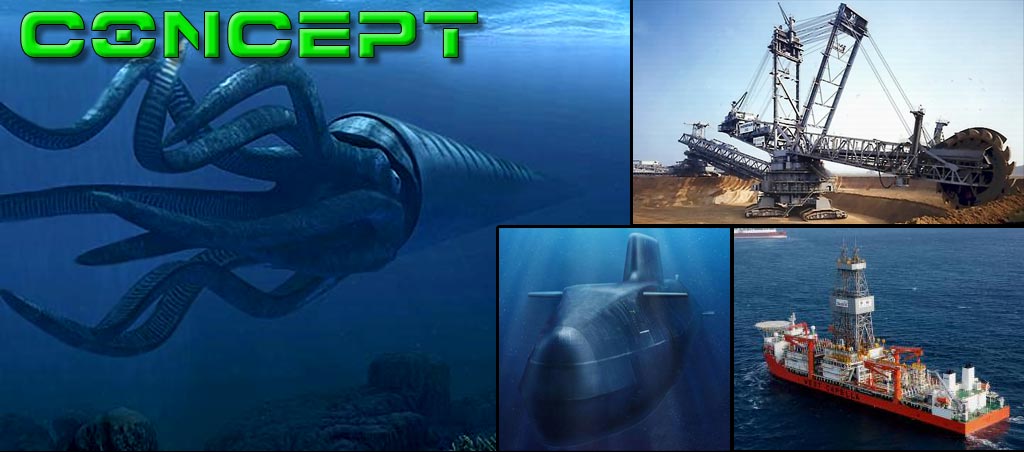

Stack O’ Caps – Refinery Plant
The start of the process really involved stacking caps… as a cone-like shape emerged I thought of building a snail with them, but as the cone got longer it seemed unlikely (and un-interesting). This stack was created and then un-created when I decided to light the model. The last three frames show the refinery portion of the Zoid. Notice that the caps were broken apart, then drilled for the larger core. Also, I began adding transparent pieces for the light to escape. This piece is the dial from a deodorant stick. The arm-like pieces came from the innards of a Spiderman web shooter toy. The final touch was to add stainless steel necklace chains to the hub. I see this as the heart of the Zoid; the actual refinery section on one end and the real Zoid and it’s hangars on the other.

Power Redistribution Plant
This is a transition piece for the cone. On the left side of the first picture you can see the end of the long, narrow shampoo bottle. To the right is a medicine cup that marks the last portion of the cone where there is a core and a shell. The core here is cut from a soft soap pump (the same kind used to make the artillery cannon for my Siege Tortoise). A pill bottle cap rings it, detailed with hard drive jumpers. Windows are cut in the armored shell to allow the illuminated core to be seen.


Turn on Your Heart Light!
This is the initial “was all of this worth the effort?” test for the light source. I was really shocked to find that the glow stick actually projected quite brightly all the way to the support for the drill bit! In this shot the body still looks like a stack of junk… but now brightly lit! I realized that It will be much more subtle when the shell was painted solid black inside and out, so you can see where I’ve penned in where openings would be cut in the armor to let the viewer see inside.






Tentacles
I have to give the credit for tentacle design to Lionel from the Zoids Poison forum; he made a small octopus Zoid (and later a much larger custom) with tentacles made from stringing sheetrock anchors end to end on a piece of wire. I used this technique for Daidalos’ tentacles. However, being a larger Zoid, I used four kinds of anchors, using smaller ones toward the end of the tentacles. I filled in the gaps inside and between the anchors with tubes of styrene, which also kept the wire centered. In the end, these tubes are painted with luminescent paint so they will glow through the armor.
The tentacles are quite flexible, but I know overworking them will kill the paint (I considered making two sets of solid tentacles in different poses). In the end the styrene "plugs" allowed them to flex, leaving enough distance to protect the paint. One thing is for certain, having this thing diving at your face with eight knife-tipped tentacles waving around a saw-toothed maw with a huge cannon in the center is a truly menacing sight!


While the form was cool, it would have to change once I decided to light the Zoid end to end. The caps were all drilled through and a central shaft comprised of two transparent plastic tubes were fitted to hold them all together. I chopped up a deodorant stick cap and made some nice sleeves that really helped maintain the shape and also gave a more armored look to encase the inner, more detailed caps. I also carved up a green soap pump gasket to hook that would act as a lens when the inner tube was lit. Lastly, the illuminating tube plugged into the drill bit, allowing it to rotate as a bonus. In the last frame you can see how well my test lighting worked; the green glow travels the entire length of the Zoid and is still vibrant all the way to the drill bit.





ENTRY: Zoids Poison Custom Contest - 2011 ~ WINNER: Best Overall - WINNER: Most Original/Creative






CAPABILITIES - Tentacle Section
The Zoid itself is a massive cephalopod; large enough to grasp and crush a Whale King with little effort. It has eight armored tentacles equipped with deep sea mining equipment; dredgers, drills, flood lights, anchors, and more. These can operate more than 5 kilometers deeper than any other Zoid on record. Each tentacle is almost a huge serpentine Zoid on its own, with limited self-awareness, guidance, and sensory abilities. When functioning in the mining or recovery role, the Daidalos guides all eight with thoughts toward the objective at hand, and allows each tentacle to maneuver to that end.
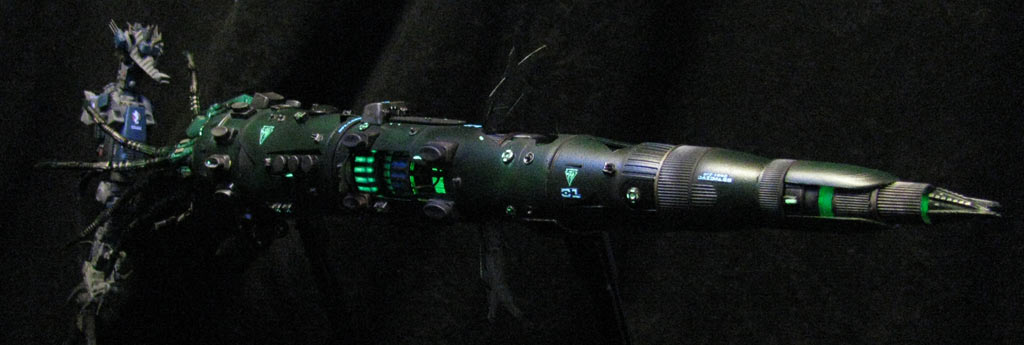

Should the GFZ-1000 Daidalos encounter Helic's Gallant Mariner, it would likely be a short and swift contest of power. The Daidalos model was constructed to the same scale as the Mariner... on accident. In truth, when the model was built the scale determined mathematically. It was a coincidence that, when compared to the Mariner data, the models were actually both 1/21000 scale.
King of the deepest depths, the Daidalos Emeralite armor reacts to the constant pressure by glowing constantly, as kinetic forces activate the self-forging properties and cause the armor to strengthen. Here the Zoid is also shown with all of its navigations beacons and marks alight, as well as the bright glow from the refinery core structures and power plant.




CAPABILITIES - Engine Section
The underside of the first section also holds the primary hydrojet nacelle; an engine 165 meters in length. This engine can push or pull the Daidalos through the water, rotating 180° to vector in almost any direction. The Daidalos has a flank speed of 40 knots and can ascend or dive at a rate of 1 kilometer per hour. Also, as a highly classified capability, the entire Zoid can lift out of the water using an anti-graviton field core. In the air, the main engine can push the city-sized machine at over 200 kilometers per hour.


CAPABILITIES - Command Section
The second portion of the shell begins with the massive shell cone hydrosystem intakes at the rear of the “head” and ends at the second master bulkhead anti-crush ring. Notable structures here are the twelve external hangar bays that ring the shell. These hold the work crew of 30 Dark Delver nautilus Zoids and the dorsal hangar for a Dark Emperor assault Zoid. The underside hangar is designed to allow 20 Darkurtis units easy access to the sea floor. The surface of the shell is adorned with many smaller structures including thruster arrays, defense batteries, and waste processing systems. Atop the dorsal armor of this segment is the large command dome that houses the bridge and redundant computer and communication systems. Also located within this section of the GFZ-1000 Daidalos is the hospital; not a mere infirmary, but a facility capable of handling more than 100 patients due to either industrial incident or military action.

CAPABILITIES - Command Section (continued)
This segment holds the refinery/factory proper, containing the heavy equipment required to separate, pelletize, purify, mold, and package the Deochalcum and Emeralite brought in through Daidalos’ huge “mouth” and lock-docks. Central to this section is the base of the Zoid’s heavily shielded core which then mimics a living organism’s spheruncle, extending through the center of the concurrent chambers all the way to the drill at the point of the cone. This segment constitutes almost half the weight of the entire Zoid, becoming a balance point around which the Daidalos may deftly maneuver. It also contains the anti-graviton field generator, which allows the entire system to reduce in weight enough to achieve air travel. It may only do so for up to 1 hour, at which point the Daidalos shall either fall, or must be entirely submerged to prevent damage.



CAPABILITIES - Refinery Section (continued) - Carrier Subsection
Atop the shell is a 100 meter long landing platform and armored bunker. This platform serves to load and offload supplies and personnel both when the GFZ-1000 is surfaced and submerged. In the surface role it functions much as a standard carrier deck, under water the hangar is pressurized and acts as the primary dorsal airlock. The most common use of the bay is to transit the Undertow amphibious hauling Zoids developed specifically for Daidalos' operations. For major transfers of crew or equipment, the platform can secure a Wale King.









DHI-164 Deep Dredger
 DPZ-333 Undertow
DPZ-333 Undertow

 DPZ-322 Dread Goblin
DPZ-322 Dread Goblin

 DHI-002 Angstmorder
DHI-002 Angstmorder
 DZ-003 Darkurtis
DZ-003 Darkurtis

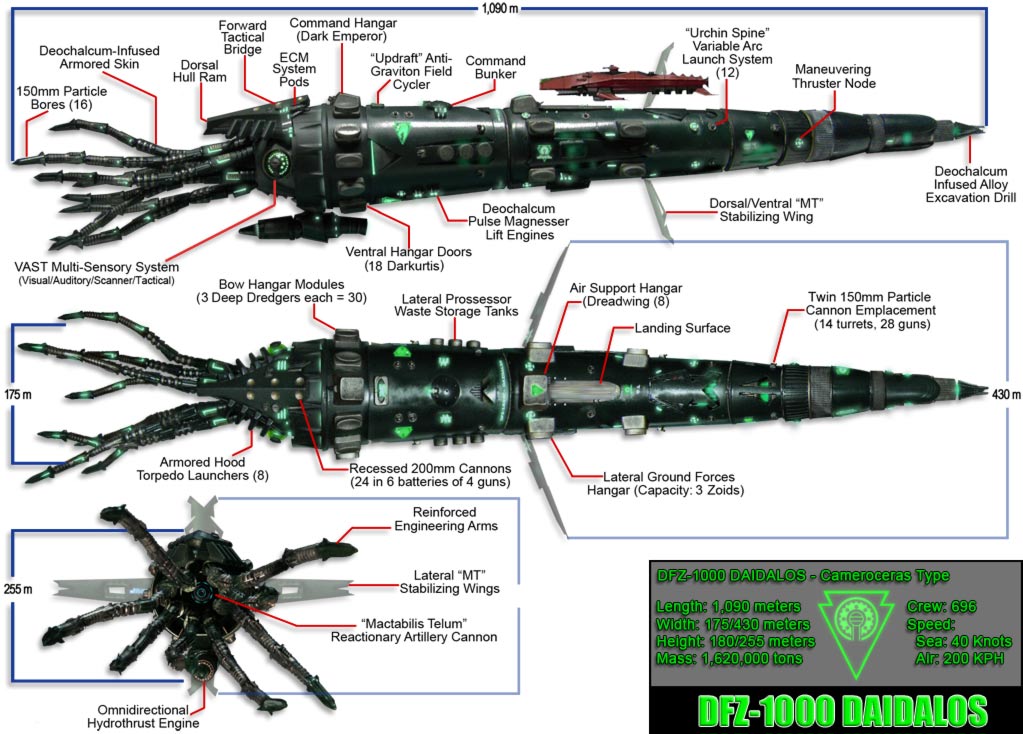
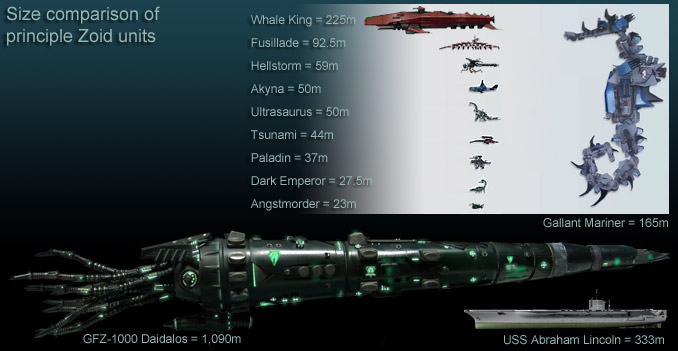
FOREMOST ON ZI
This chart was created to help associate the vast scale of the GFZ-1000 Daidalos. In comparison, the gigantic Gallant Mariner appears as a mere HI-1000 series machine. The huge and mighty Fusillade, terror of all nations to stand against Zenevas, becomes little more than bug it appears. That an Ultrasaurus would be leveled by a single swipe of a tentacle is truly an excellent measure of just how immense the Daidalos is.
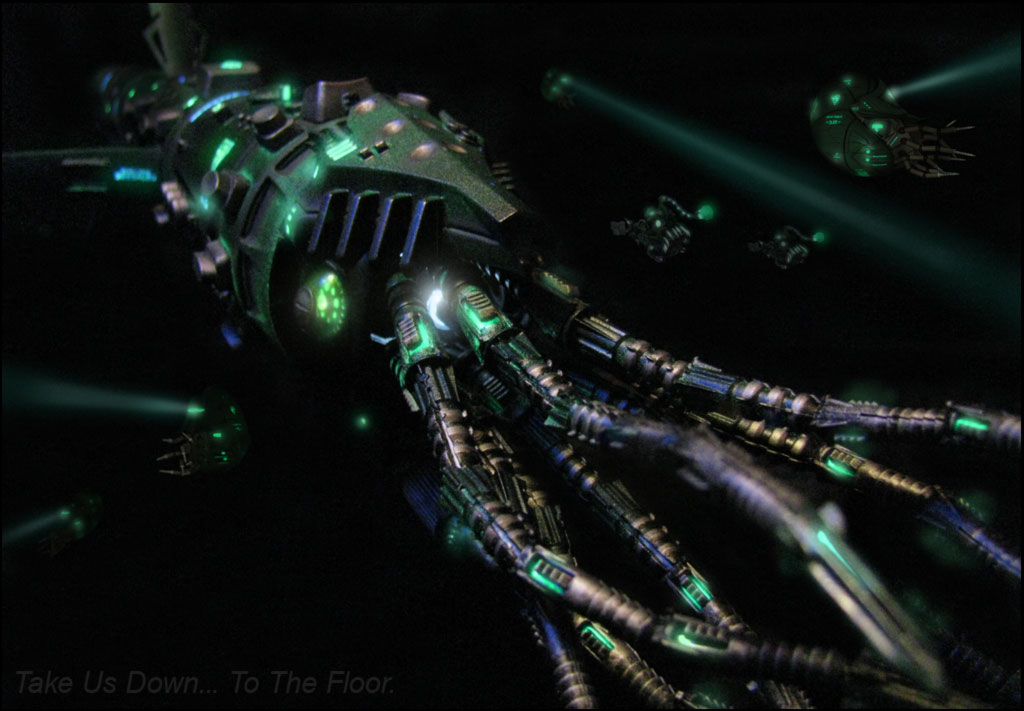
And now, let's get to it...
THE BUILD
Open & Shut Case
Originally I had wanted to create a number of scale models from the Support Batalion, but time was simply against it. Still, I wanted something to show somewhat the scale of this build, above and beyond a couple of small guns. I decided to build an optional hangar that would show the doors open with the internal details visible. This open hangar could be mounted in place of the standard closed version. Building this hangar required hollowing out a small keyboard key to make it identical to the standard mounted boxes. Then the parts of the key support structure was cut out, smoothed over, re-organized, and re-inserted into the opening. The tiny internal parts took the shapes of three bays separated by launch rails, with larger structures on either side. This tiny feature is one of my favorites of the build, though I still would like to see some tiny Deep Dredgers mounted within.
Big Numbers of Little Guns
In this case, I went farther then the original plan. I had intended on mounting a dozen or so of these little plastic grills cut from the keyboard keys simply as a surface detail to add interest. Then I thought I would name them as recessed defense guns, but do little else with them. As I placed them about the hull, they seemed a lame, hollow excuse for details until I decided to upgrade them. I stripped the insulation off of some wire and cut it into dozens of little tubes with my Exacto. These were glued into the grills, two by two, raised as slight angles with the reverse end filled and smoothed. In the end I had 14 turrets scattered across the hull. In scale, they grew from 50mm defense guns to 90mm weapons with more attack potential.

All Decked Out
In my search for adding details that made sense, I decided there was a great need for adding a surface deck to the Zoid that would allow cargo and crew offload and onload. I also wanted the Daidalos to have some measure of air power to defend it the GFZ-1000's mission was simply too vital to lack at least some form of air support for when it was surfaced. A carrier station seemed the logical answer. The hangar is a medium sized keyboard key with the support cut out, then shaped to fit the hull. For the interior I used the key's support post, cut apart and re-inserted similarly to the swap-out hangar. The final addition to the hangar was the pair of twin defense turrets to protect the hangar or cargo during transfer, or to prevent an enemy from landing on the deck. The deck was created by cutting out a portion of deck from a USS Arizona model I picked up at a thrift store for $1 (it has served me well!)
OBE: One Big Engine
To give you a sense of scale on the engine, it is about 3/4 the length of a Whale King… 150 meters … or 3 Ultrasaurus. My original concept of just using a cool shaped soap pump spout was scrapped because 1) it was just too small, and 2) it needed to look far more industrial to match the rest of the Zoid. I went with using the core of a Huey Cobra exhaust system. I created a huge intake system using a toothpaste cap and the wheel system of the Hydrazoid (the wheels formed the backs of the eyes). The cone was taken from a ballpoint pen, filled with putty and smoothed. I then made an internal nozzle detail using the head of a sheetrock anchor. While I would love to have lit it inside, I am willing to paint the inside with luminescent paint and charge the hell out of it before filming! The last details for the engine was to add armor using Seismosaurus parts (YAY! More Zoid parts!)
Custom Labels
As has become tradition with all of my customs, I produce custom labels to add a little more distinctiveness. Daidalos, however, posed a bit of a challenge in that, because the Zoid was so massive, it would lack many of the details I would normally include. After all, any ejection handle, rescue, fuel port, or bridge details are about the size of the point of a pin, let alone the head, and that leaves me with the larger markers like those you see on the largest warships. Primarily, I created the official Daidalos logo, which is the Guylos arrowhead with the dragon replaced with a symbolized version of the Zoids's massive eye. Once these labels were placed about the hull, the more difficult touch would be just around the corner... read on!
Neo-Guylos Paint Scheme: Deochalcum-Infused Emeralite
The finishing touch for the Daidalos, of course, is the paint job which I use for my Neo-Guylos forces. A new form of Dark Zoid has been developed by the Dynasty, and all of these units possess the glowy parts found on the original designs. In addition, the black Dark Armor has been replaced with a new invention of Guylos; Deochalcum-Infused Emeralite Reactionary Armor. In the story this armor self-forges with kinetic impact or extreme heat (similarly to nickle) meaning that if it survives a barrage of projectile or beam weapon fire the armor becomes harder. This was first used on Dark Emperor, and now that it's a staple, the formula must be reproduced with every Guylos Zoid. Here is the armor formula: 1) Gloss black undercoat. 2) luminescent (glow in the dark) paint airbrushed over the surface. 3) Airbrush transparent/metallic emerald green (changes the glow to dark green) After the armor is painted the "soft" portions of the Zoid are painted with flat black and then dry brushed with Testors' Burnt Metal Metalizer, which gives a slightly tanned, old steel look to the parts. The final painting is the surface glows; vents, recessed grills, and all custom labels are hand over-painted using luminescent paint to achieve the classic Dark look. The only drawback to this particular build was the requirement to photograph it in low light with a high ISO speed, but with a digital camera. Perhaps I should get a better system, to reduce the graininess, but to witness the paint in person is just striking.


Thanks for Playing!
It's been a long build (on virtually only 1 to 2 hours per week, unfortunately), but I'm please with the results. Thanks for reading through my build page, and keep on Darthing!
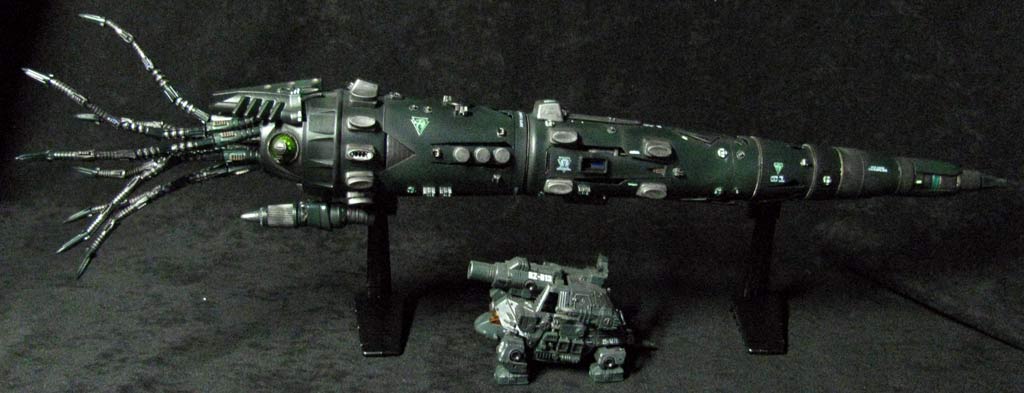
The model of the Daidalos is only about 2/3 of a meter (2 feet) in length. It is almost solid enough to use as a baseball bat, or for home defense, however. :D
Winner Best Overall &
Most Original / Creative
Most Original / Creative
Zoids Poison 2011
Custom Contest

